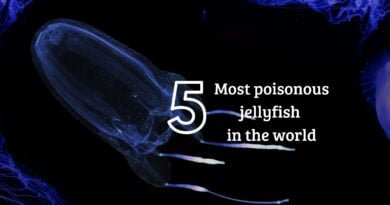10 Amazing facts about the Amazon River Pink Dolphin
Called pink dolphin because of its light coloration that fades to reddish tones, the Inia geoffrensis is a rare species of cetacean that inhabits the fresh waters of the Amazon and Orinoco rivers and that has always stimulated the imagination of local indigenous populations. There are numerous legends that hover around this animal, but let’s look together at what are the main characteristics of this fascinating cetacean.
- The pink dolphin is also known as bufeo, boto or Amazon dolphin and is the largest river dolphin species. There are three subspecies: Bolivian pink dolphin, Amazon pink dolphin and Orinoco pink dolphin.
- It can be found in the basin of the Amazon, Orinoco and Madeira rivers in Bolivia. Its territory covers about seven million km2 and includes marine waters, fast waters, waterfalls and lower parts of rivers. Regarding their habitat, the Amazon pink dolphin is easily found in the main rivers and fast-flowing waterfalls of the area. Their adaptability allows them to live even in flooded forests during the rainy season that give rise to small lake formations connected to the rivers. During the dry season, they are seen occupying large riverbeds, while in the winter they move at will in search of food reaching large territories of the forest and floodplains.

- They acquire their pink coloration over time. At birth and in their youth, they are gray, in adolescence they are light gray and at the arrival of adulthood they turn pink as a result of the wear of their skin, with males being pinker than females. Although it is not known for sure what causes their special color, possibilities such as their adaptation to the environment or the presence of capillaries on the surface of the skin are being considered.
- The Amazon pink dolphin’s snout is long, with pointed teeth (contains up to 28 pairs of sharp teeth on each side of their jaw) for catching and crushing prey. It must breathe every so often by coming out of the water; when it does, it shoots a jet up to two meters high through its dorsal blowhole. They possess excellent vision and a melon organ used for echolocation.
- It is a solitary cetacean and rarely groups with a few other members. It is very common to observe mothers with their young cubs. Large numbers of pink dolphins can be observed in areas where food is abundant. They are not very playful, aggressive or acrobatic like other species of dolphins, but they have been seen on repeated occasions coexisting with fish, turtles and other marine animals and showing not very shy behaviors.
- The gestation period lasts 9-12 months and they have only one calf. Birth occurs during the flood season and the newborn has an initial weight of 80 kg. They are breastfed for one year and the interval between the birth is 15 to 36 months.

- It reaches up to 2.5 meters in length with an average weight of 180 kg in males, a complexion quite proportional to the females that usually measure 2.9 meters and weigh about 150 kg. The head is prominent with a 180-degree movement capacity due to the lack of cervical vertebrae. It has small eyes and a long snout that serve for different functions.
- Amazon pink dolphins are not at all like the dolphins seen in the sea, since they are a species with different adaptations specially prepared for them to survive in their habitat. These dolphins are distantly related to those of the sea, since their families are different. There are many different species of river dolphins, and the Amazon pink dolphins are the most intelligent of them all, since they have a brain capacity that is 40% superior to that of human beings.

- Amazon pink dolphins are animals that feed on small river fish, small turtles and even crabs or catfish. As crabs and turtles are always down in the river, pink dolphins are always swimming towards the bottom and that is why over the centuries they have developed such prominent snouts.
- In addition, they have a special feature that helps them to hunt in shallow waters and even in flooded plains. Their cervical vertebrae, which are not fused and therefore allow them to move their heads up to 180 degrees. In addition, to hunt fish, they have to position themselves around some groups with several companions and take turns to eat.
- In addition, they have a special feature that helps them to hunt in shallow waters and even in flooded plains. Their cervical vertebrae, which are not fused and therefore allow them to move their heads up to 180 degrees. In addition, to hunt fish, they have to position themselves around some groups with several companions and take turns to eat.
- Males tend to have a stronger tone than females, as well as being larger and heavier than females. This species is the largest of the river-dwelling dolphins. It has a streamlined body, which ends in a triangular caudal fin. The Boto river dolphin, as this species is also known, does not have its cervical vertebrae joined together, as is the case with most cetaceans. This particularity in its skeletal system, together with the size of its fins, allows them to have excellent maneuverability when it navigates among the submerged plants of the flooded forest in search of prey.





